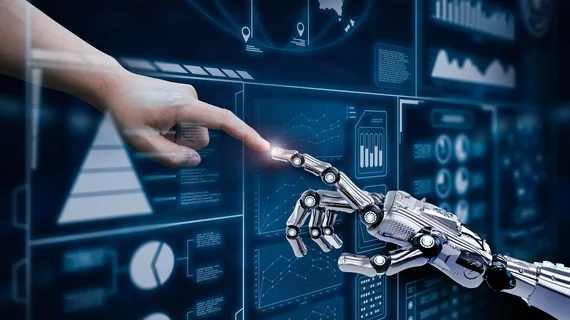MIT’s AI system diagnoses chest conditions on x-rays, but knows when a radiologist could do better
Radiologists have largely moved past the idea that artificial intelligence is here to replace them. And a new platform released recently is a perfect example of how imaging experts and AI can coexist.
Researchers from MIT’s Computer Science and Artificial Intelligence Lab detailed their machine learning system July 30 in the open-access publication arXiv.org. One of its key features is its ability to either make a prediction or recognize when to hand off the job to a human expert.
Co-author Hussein Mozannar, a PhD student at MIT, said it makes this determination based on factors like a radiologist's availability and experience level.
“In medical environments where doctors don’t have many extra cycles, it’s not the best use of their time to have them look at every single data point from a given patient’s file,” Mozannar added in a statement. “In that sort of scenario, it’s important for the system to be especially sensitive to their time and only ask for their help when absolutely necessary.”
The researchers trained their AI on various tasks, including how to read x-ray images and diagnose conditions such as collapsed lung and an enlarged heart. For detecting the latter, Mozannar et al. determined their hybrid approach was 8% better than a human reader or AI working independently.
The AI model works by using a classifier that predicts a specific set of tasks, along with a “rejector” that determines if an objective should be completed on its own or via a human expert.
One of the study’s lead authors, David Sontag, an associate professor of Medical Engineering in the Department of Electrical Engineering and Computer Science at MIT, noted that, thus far, the AI has only been tested using synthetic experts. In the near-term future, the group will include radiologists and believes the tool can work with multiple rads who have varying levels of training.
“There are many obstacles that understandably prohibit full automation in clinical settings, including issues of trust and accountability,” Sontag added. “We hope that our method will inspire machine learning practitioners to get more creative in integrating real-time human expertise into their algorithms.”

